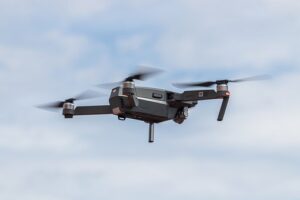 The proposed Remote ID rule was several years in the development – but as the FAA reviews the thousands of comments it received on the rule, industry stakeholders still hope that changes to accommodate non-commercial interests will be made.
The proposed Remote ID rule was several years in the development – but as the FAA reviews the thousands of comments it received on the rule, industry stakeholders still hope that changes to accommodate non-commercial interests will be made.
Today, drone industry stakeholders incuding the Academy of Model Aeronautics (AMA), drone delivery and UTM company Wing, the Aircraft Owners and Pilots Association (AOPA) and the Experimental Aircraft Association (EAA) sent a letter to the FAA urging them to make to “essential changes” to the proposed remote ID rule.
The AMA has been on the forefront of efforts to work with the FAA to accomodate their members and other model aircraft hobbyists in new regulations. Despite the AMA’s long record of safety, the proposed Remote ID rule would limit hobbyists. Google spin-off Wing has long advocated for a policy of open skies for all – arguing that the commercial industry and hobbyists can safely share the airspace. AOPA and EAA also represent their members in asking for the rule to accomodate young fliers and a wide variety of aircraft. While recreational flyers outside of community-based organizations have been accused of not respecting regulations, the AMA and other organizations point out that as the drone industry grows, future talent in aviation jobs grow out of that hobbyist community.
In the letter, the authors ask that the recreational industry be included in plans to integrate drones into the airspace.
“…We agree that safety and security are critical to the successful integration of UAS in the United States. However, we urge the FAA to make essential changes to protect and sustain the model aviation community…”
“The proposed rule will make it nearly impossible for everyday hobbyists to share the skies. They will need to incorporate highly automated equipment into home-built models and implement manufacturing processes comparable to a commercial aircraft. These requirements are infeasible for hobbyists who experiment in their garage, buy material at the local hardware store, and fly in their backyard or the local park.
“We urge the FAA to consider alternative approaches that promote safety and security while supporting model aviation. For example, hobbyists could notify their planned flight area to the FAA and other observers on the ground via smartphone app. Today, drone operators can fly in controlled airspace around our busiest airports by notifying their planned flight area to the FAA through apps. The FAA should be applauded for digitizing these capabilities in an accessible way. That approach is safe, smart, and sensible, and could apply to remote identification. Likewise, organizations such as clubs or schools should be permitted to renew and establish new “identification areas” over time, pre-vetted by the FAA.”

Miriam McNabb is the Editor-in-Chief of DRONELIFE and CEO of JobForDrones, a professional drone services marketplace, and a fascinated observer of the emerging drone industry and the regulatory environment for drones. Miriam has penned over 3,000 articles focused on the commercial drone space and is an international speaker and recognized figure in the industry. Miriam has a degree from the University of Chicago and over 20 years of experience in high tech sales and marketing for new technologies.
For drone industry consulting or writing, Email Miriam.
TWITTER:@spaldingbarker
Subscribe to DroneLife here.







[…] is launching the first nationwide implementation of Remote ID services. With a final rule on Remote ID for drones due by the end of this month in the U.S., the global aviation community is watching this […]